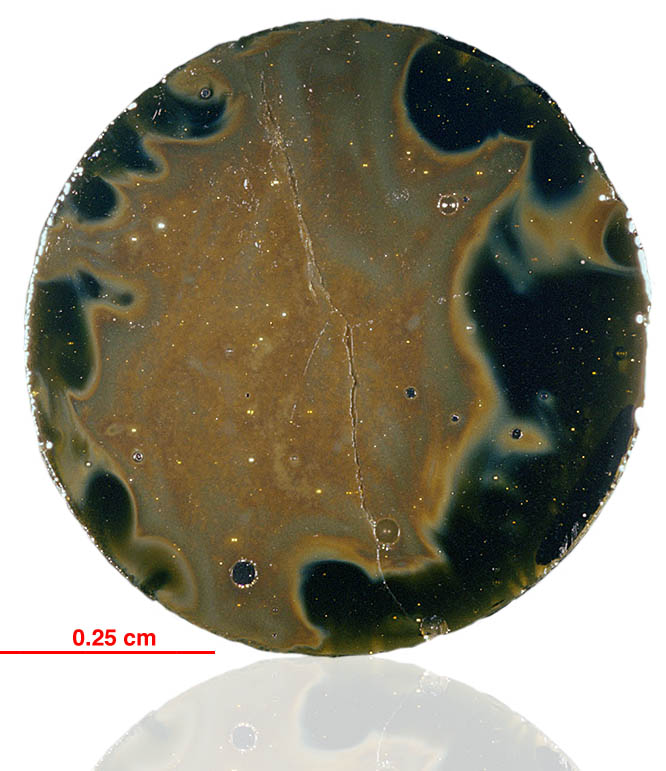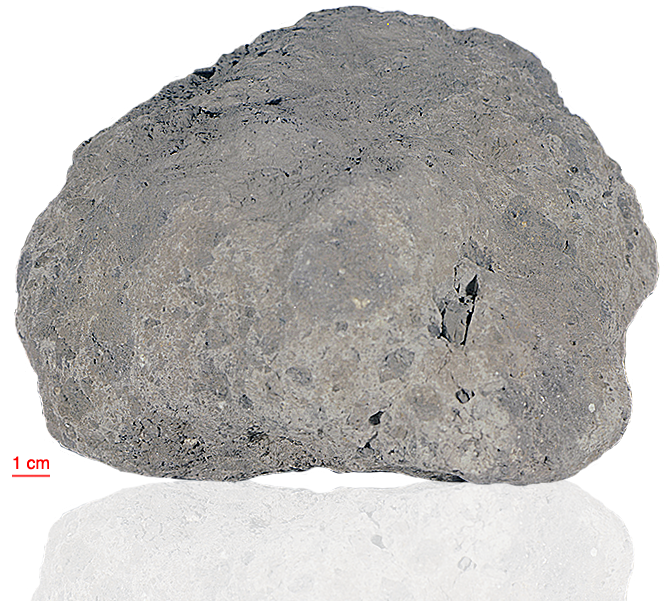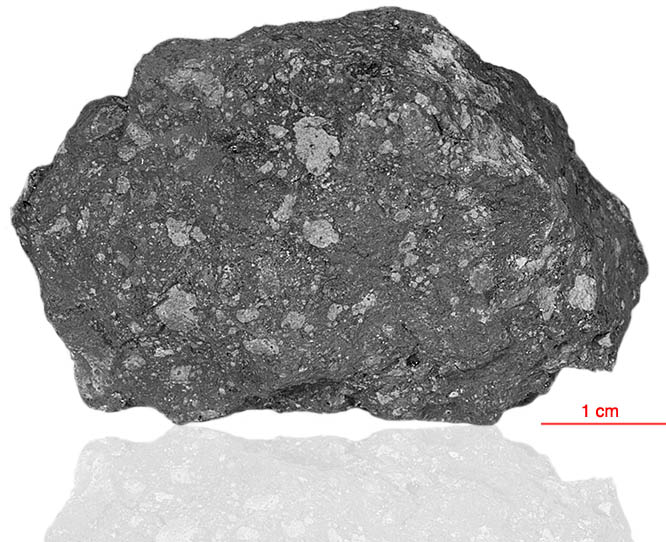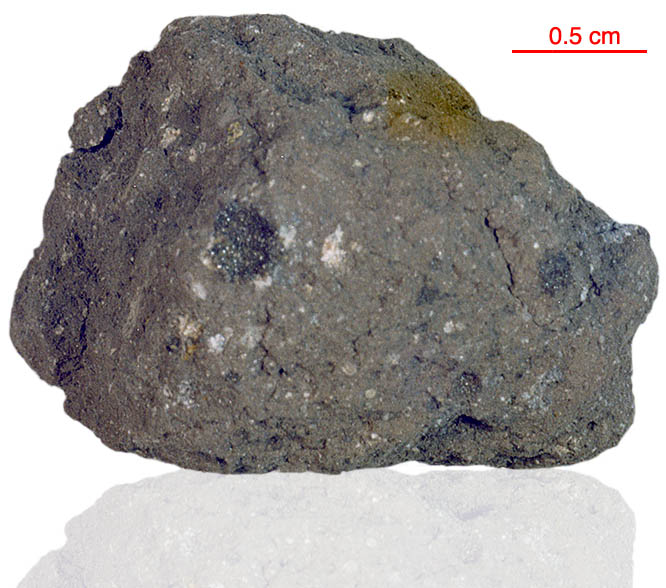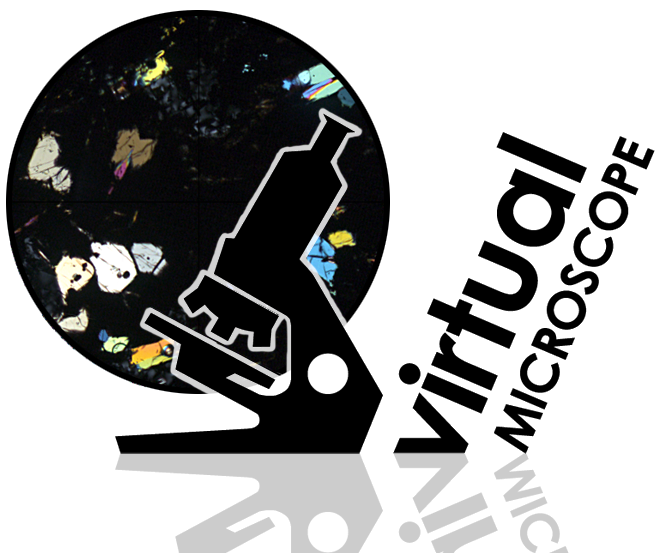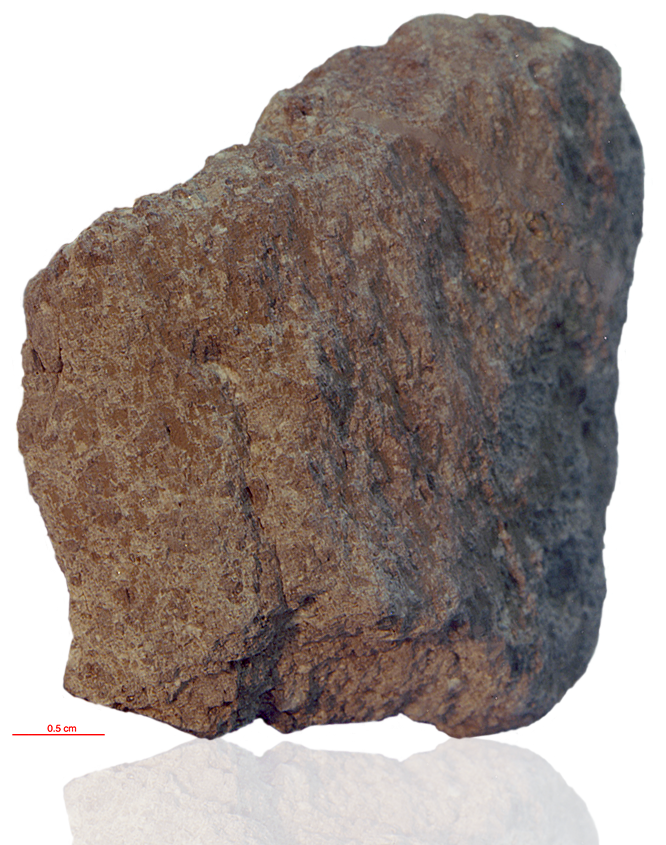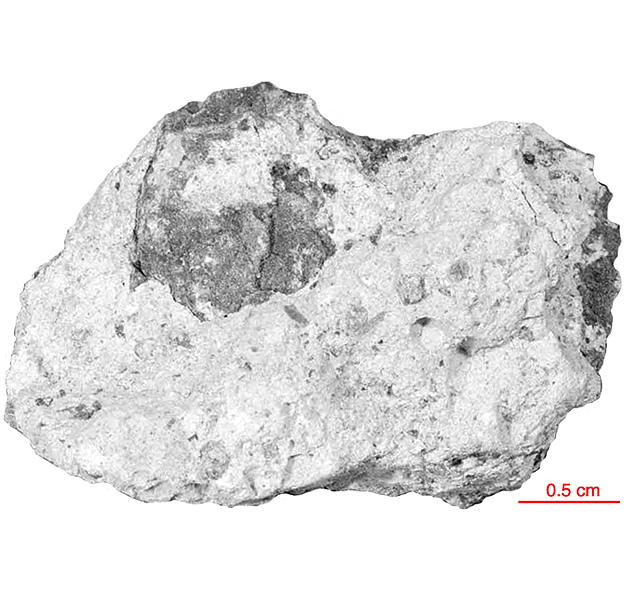
Fact sheet
14083 is a blocky to slightly slabby, angular rock with a very rough surface. The sample is a very friable, fine-grained clastic rock with a few percent of subrounded dark clasts in a very light grey matrix. The matrix is porous and characterized by a seriate texture, with material ranging from the limit of resolution up to about 300 microns. The mineral clasts are plagioclase, pyroxene, olivine, ilmenite and colourless glass. Plagioclase (An70-96) is most abundant and only rarely shows undulatory extinction. Olivine and pyroxene are sub-rounded and less than 300 microns. The lithic clast population is dominated by poikilitic-textured impactites which contain plagioclase laths enclosed in pyroxene oikocrysts together with clasts of angular plagioclase. Several clasts of high-Al basalt and vitric-matrix breccia have also been reported.
The sample weighed 13.37 grams before analysis. It has not been dated.
The mounting resin of this thin section has deteriorated over time and now contains clusters of feathery crystallites within and around the margins of the thin section.
Further details of this and other Apollo samples are here: http://curator.jsc.nasa.gov/lunar/
The Apollo 14 landing site was in a region formed by impact-basin debris.
Most of the 42 kilograms of rocks and soil collected on Apollo 14 are breccias (rocks that are composed of fragments of other, older rocks). In some cases, the rock fragments that form a breccia are themselves breccias. Such rocks obviously have experienced complex histories with multiple generations of impact events. Some breccias were heated enough that some of the material in the rock was melted.
Apollo 14 was launched on 31 January 1971.

